The best free PC games 2022

 Image: miHoYo
Image: miHoYoWorth the price of admission
There was a time when “free-to-play” was a dirty term in the games industry. There are still terrible, exploitative free-to-play games on the market—more every day, in fact.
But occasionally—occasionally—we get something…miraculous. We get a free-to-play game that doesn’t try to con players out of money or make the design intentionally boring in order to make those purchasable unlocks more exciting.
Here, you’ll find a list of games so good the developers could’ve charged money (or, in some cases, did charge money) before going free-to-play. These aren’t just good free-to-play games, they’re good games, full stop.
Genshin Impact
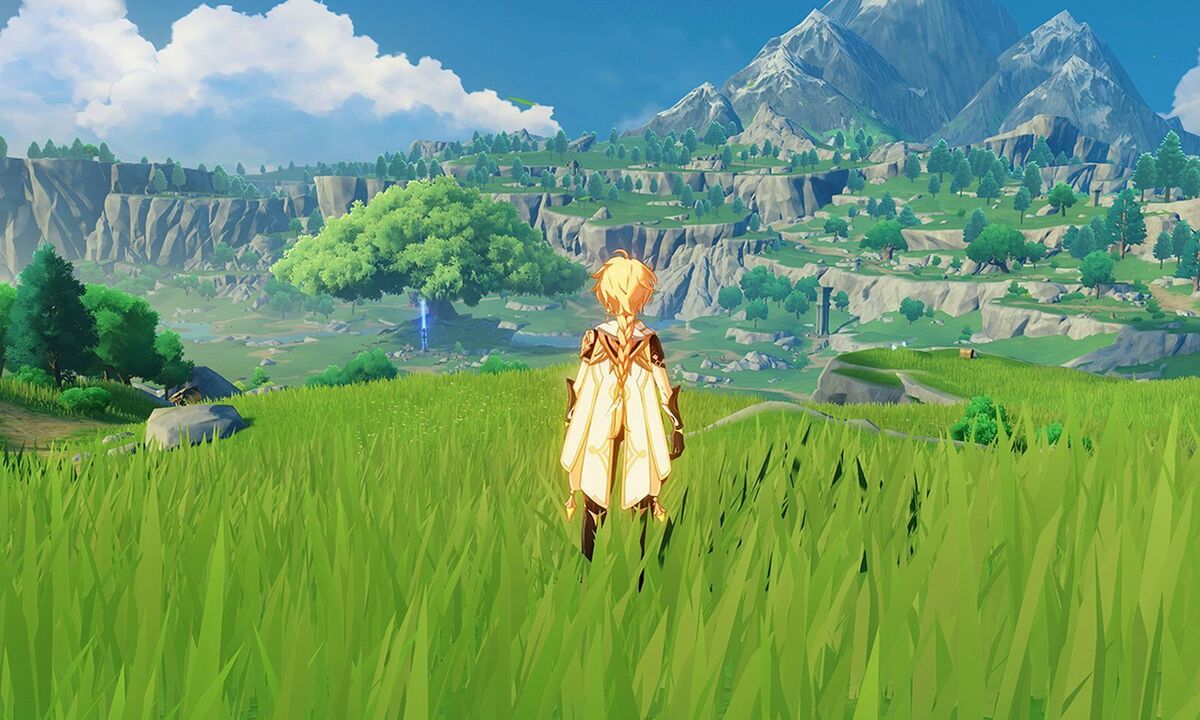
Image by miHoYo
Genshin Impact was a hit from the second it landed, and it’s easy to see why—at first blush, it’s like an even-more-anime Legend of Zelda: Breath of the Wild, and unlike Nintendo’s Switch-only hit, you can play it on the PC, PlayStation, and mobile phones alike. And did we mention it’s free?
Yes, some people hate on Genshin Impact because it’s brimming with lootboxes, but this is a gacha game done (mostly) right. You can play the majority of the game without ever feeling the need to open up your wallet, and better yet, Genshin Impact is a good game. Exploring the breathtaking open world while cobbling together a team of adventurers never feels stale, especially once you start digging more deeply into how you can build devastating combos around your crew’s individual abilities. The developer has been actively supporting the game since launch, as well, so it gets new content often. The endgame can be a brutal grind, but there’s a lot of meat on this bone even if you never spend a dime.
Enlisted
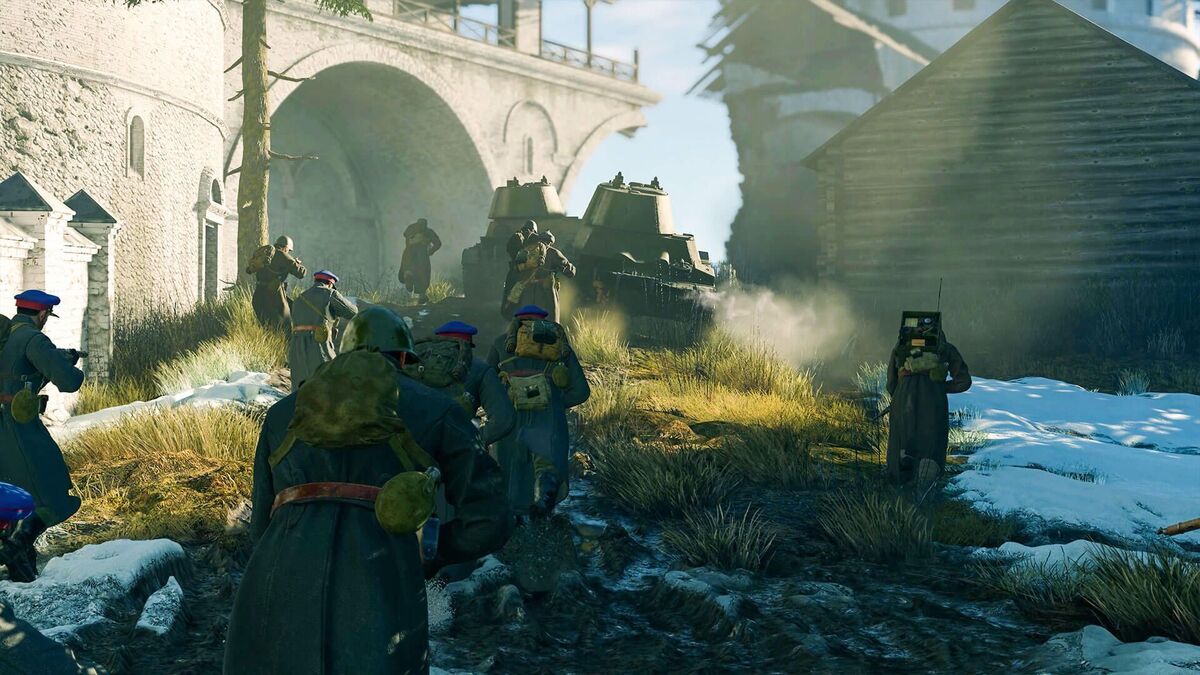
Image by Gaijin Entertainment
This massively multiplayer, squad-based World War II shooter feels a lot like Battlefield, only tuned more towards historical accuracy than arcade-like hijinks. That realism makes Enlisted feel a lot more deliberate and patient than most other shooters you can find today, in a refreshing-if-you-dig-that sort of way. A single rifle shot can take you out—but to even the odds, you command a squad of AI bots fully under your command, issuing kill orders or bossing them into different positions.
There’s several different infantry classes, hundreds of different period-specific weapons, and a range of aircraft and vehicles (including tanks) that you can commandeer at any time. If that sounds even remotely interesting, be sure to check it out. It’s free after all.
Valorant
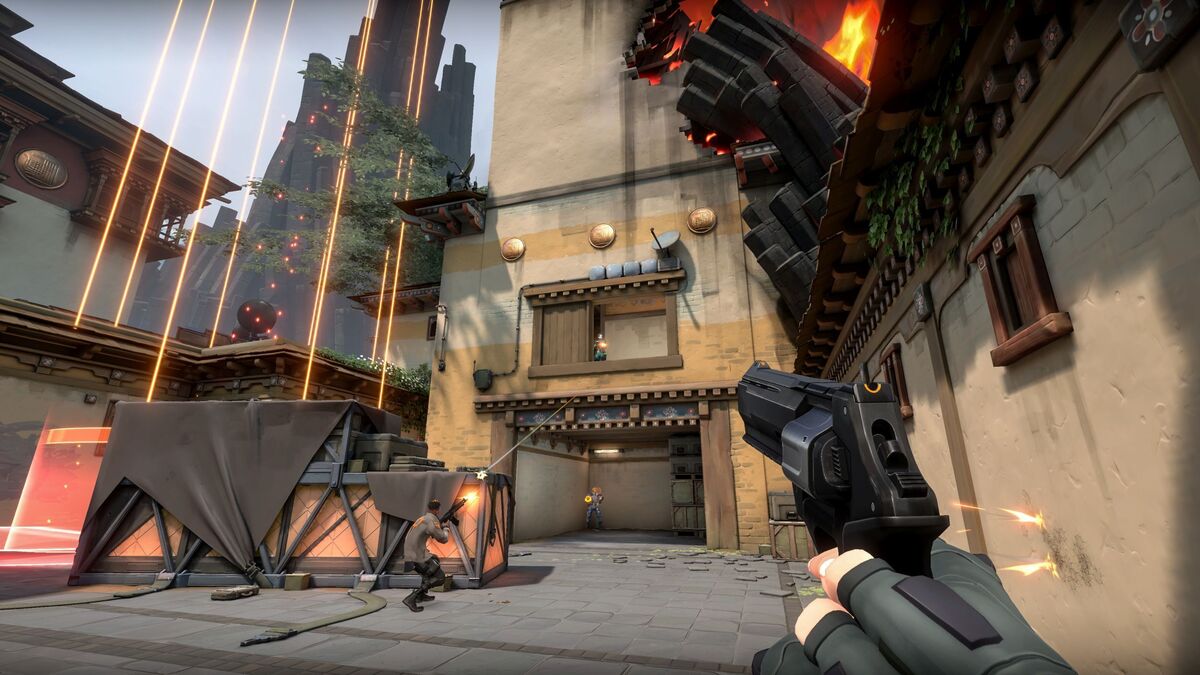
Image by Riot
The creators of League of Legends finally did it. After uh…over a decade, Riot finally put out another game. And you know what? It was worth the wait, because Valorant is pretty phenomenal. Wearing its Counter-Strike and Overwatch inspirations on its sleeve, Valorant is nevertheless one of the tensest and tightest shooters released this past decade, combining twitchy firefights with a fairly standard litany of hero abilities.
It works, and it works well. Valorant could use more maps and more heroes—more of everything really—but the bones are here, and given that League of Legends still receives regular updates I don’t think we need to worry on that front.
The only aspect that gives me pause? Valorant‘s kernel-level anticheat, Vanguard. Riot’s not the only company to integrate a kernel-level anticheat, but Vanguard’s the first I know of that starts at boot and runs in the background all the time. Is it a security risk? Probably (and hopefully) not—but it could be, and I’m not convinced it’s worth going down this road just to protect the sanctity of a video game’s multiplayer.
Fortnite

Image by Epic Games
Once, we had to specifically refer to “Fortnite: Battle Royale” to distinguish it from its horde-mode predecessor. I hardly think that’s necessary now.
In the ensuing years, Fortnite has become the largest game in the world, boasting hundreds of millions registered accounts and a peak of over 15 million concurrent players. It’s so big, it forced Sony to consider crossplay between the PlayStation and other platforms. It hosted virtual concerts and special events attended by millions. It even earned enough to allow Epic to open its own Steam competitor, and dole out plenty of money for exclusive games on top. It’s a force of nature.
And it’s still going. Epic continues to update the game at a prodigious rate, changing the map, the guns, the skins, the emotes, the core mechanics, basically everything on a regular basis. At its core Fortnite is still a battle royale with a building component, but Epic’s live-service treatment is the real story here.
Dwarf Fortress
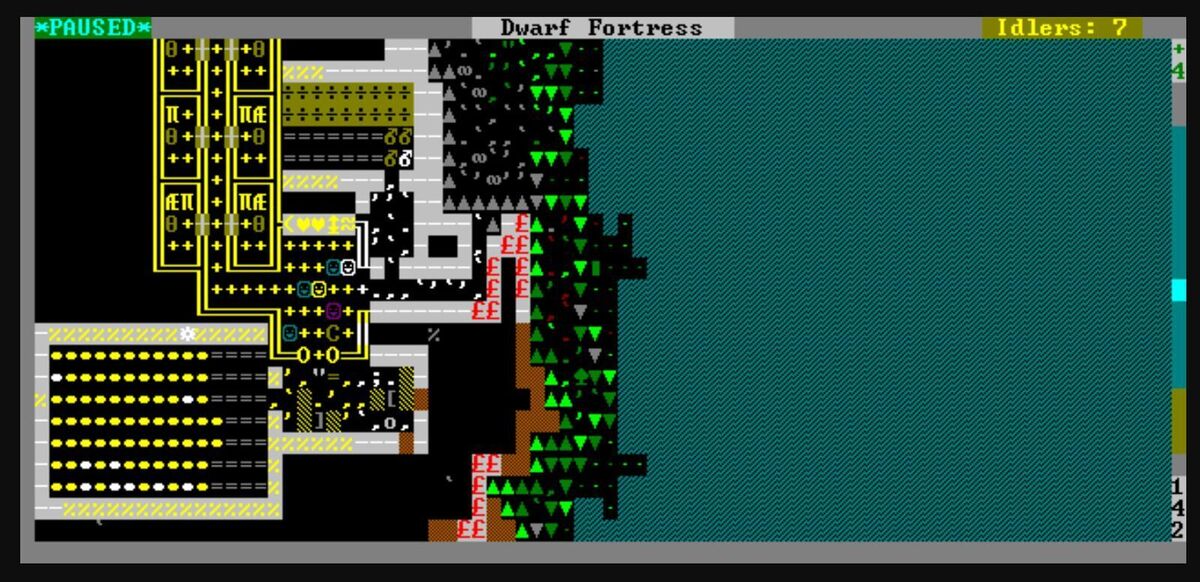
Image by Bay 12 Games
You could call it an ultra-complex, open-ended, randomly-generated colony management game. But really Dwarf Fortress is an endless generator of absolutely wild tales, just like Crusader Kings. There’s a reason why this game has been a massive hit for nearly 20 years despite its simple text-based graphics—though there’s a Steam version with prettier graphics coming…sometime.
Dota 2

Image by Valve
It’s been well over half a decade since we first wrote this list, and MOBAs (Multiplayer Online Battle Arenas) have waned a bit in popularity—but not that much. You don’t hear about them as often, and the cash-grab clones have mostly moved to battle royales. That said, MOBAs still have a staggering number of users, and Dota 2 maintains the record for the largest esports prize pool ever, with The International 8 featuring a prize pool of $25.5 million in 2018. It’s huge.
If you’ve still never dipped your toe in the MOBA waters…well, it’s a bit hard to recommend now. The people who’ve stuck with the genre all this time are pretty hardcore. For the curious, though: Dota 2 is the successor to the WarCraft III mod DOTA, or Defense of the Ancients, the grandpappy of the whole genre. Players pick a hero and battle it out against the other team, competing to bring down the enemy base by out-maneuvering foes with skillful tactics. Or, more likely, you pick a hero and mess something up five minutes in, and your entire team gets angry because they know you just lost them the game.
Here’s a Wiki. Good luck.
League of Legends
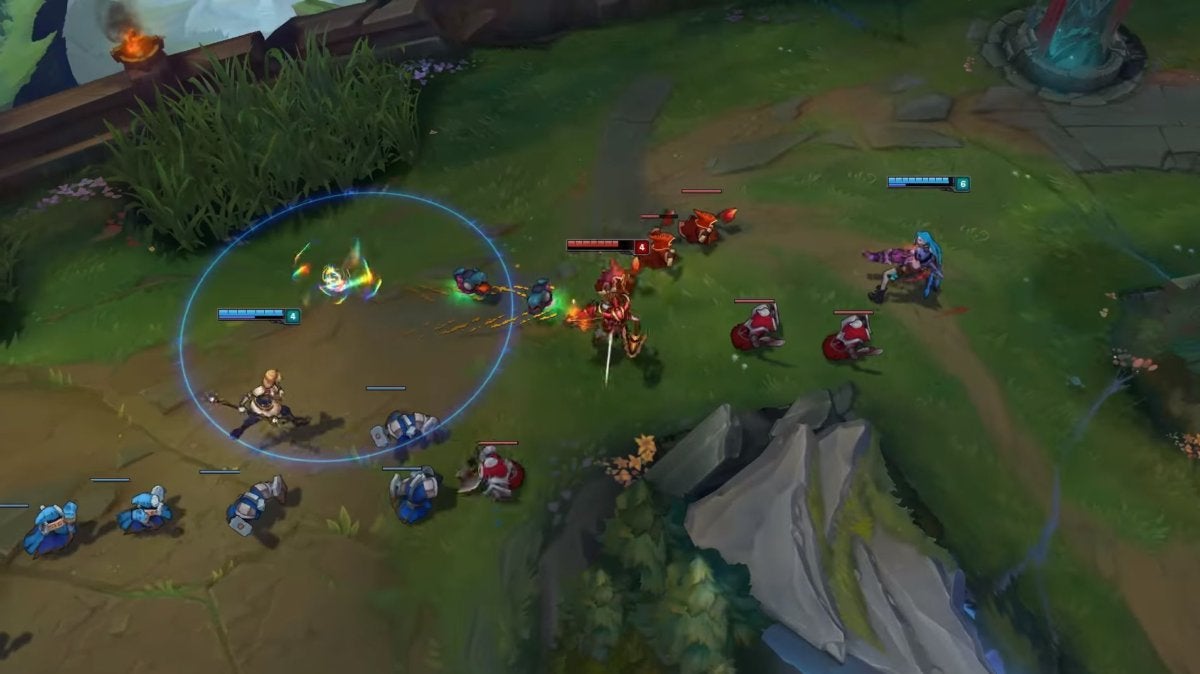
Image by Riot Games
We can’t mention Dota 2 without mentioning its counterpart, League of Legends. League is yet another MOBA, again inspired by the original DOTA mod. And like Dota 2, the people who are still playing it tend to be very invested at this point.
Say that doesn’t bother you, though. You want to play a MOBA. Hell, you need to play a MOBA. In that case, why choose League of Legends over Dota 2? Now we’re getting into dangerous “Mac versus PC” or “Schwarzenegger versus Stallone” arguments, the type where nobody wins. The truth is you should just pick whichever one your friends are playing or whichever art style appeals more, and jump in. The differences when you’re starting are minimal—you probably won’t even notice most until you’ve reached an advanced skill level in one or the other.
Warframe
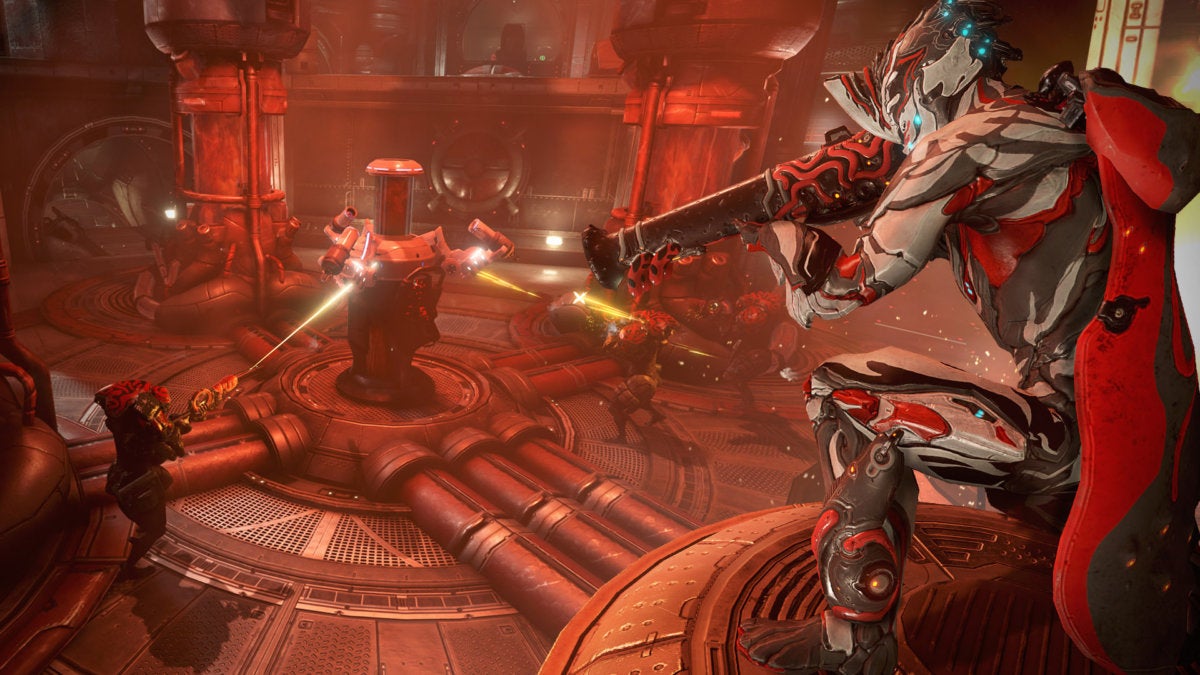
Image by Warframe
Warframe should be one of the bad free-to-play games. It gets repetitive. It’s a grind at times. There are major balance issues. There’s a lot of waiting around, which can be “solved” by dumping money into the game. It is, in other words, a predatory free-to-play game.
But for some reason none of that matters. In many ways, Warframe fulfills the promise of Destiny—excellent mechanics supporting an excellent feedback loop. You grind, sure. It’s a Skinner box. But it’s a Skinner box where you play as a space ninja, and the minute-to-minute game is so fun it’s easy to find yourself hundreds of hours down the hole even after acknowledging the game’s faults.
Credit to Digital Extremes for supporting the game, too. 2017’s Plains of Eidolon expansion added a whole open-world area to Warframe, completely changing the way you interacted with the game, while recent updates refined those ideas even further. Pretty impressive for a game that helped kick off this entire console generation.
Destiny 2
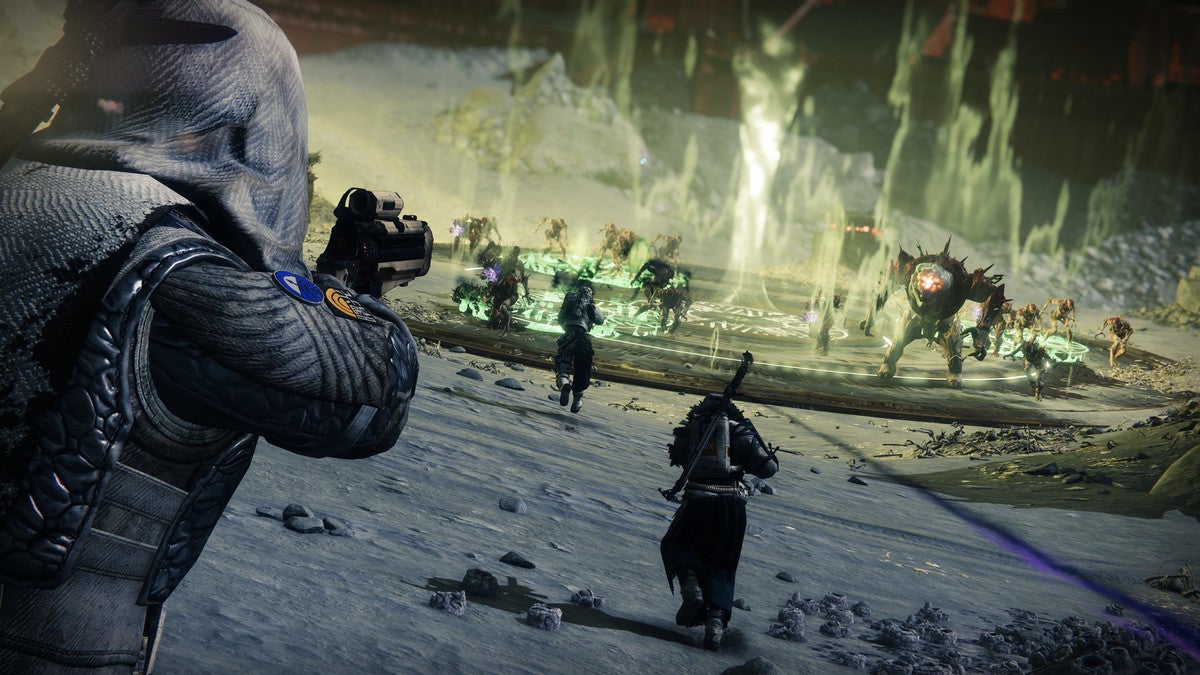
Image by Bungie
The Bungie-Activision divorce had a huge impact on Destiny 2 in 2019, but the biggest change of all? Free-to-play. Not the entire game, but Bungie did open a substantial chunk of it. Dubbed Destiny 2: New Light, the entire first year of content is free as of last October, plus all planetary locations and Crucible content.
And it’s on Steam.
It’s a great deal, if you’ve waited two years to start Destiny 2. There’s a lot to experience if you’re just getting started. The meatier follow-on expansions are only a single purchase away too, if you decide to dig the hole deeper—and you should. Destiny 2‘s story seems to be hurdling towards a boiling point with the upcoming Witch Queen expansion revolving around big baddie Savathûn, who somehow managed to create evil Hive Guardians with powers that mirror your own.
Path of Exile

Image by Path of Exile
Path of Exile‘s another one that’s been kicking around for the entire console generation, and looks to continue long into the future. And why not? If you want a free-to-play game done right, it’s Path of Exile. To start with, it’s one of the best action-RPGs in recent memory. Its convoluted class/leveling system gets talked about most, but the whole point-and-click-on-things-until-they-die aspect has a great feel to it, the loot drops are satisfying, and the world itself fascinating.
But even more impressive is that developer Grinding Gear continues to add a staggering amount of content to the game. Every year there’s at least one major expansion, sometimes two, and it’s all free. It’s a pretty incredible action-RPG. Highly recommended for fans of click-click-click combat—though Path of Exile 2 should be released any day now.
Auto Battler games
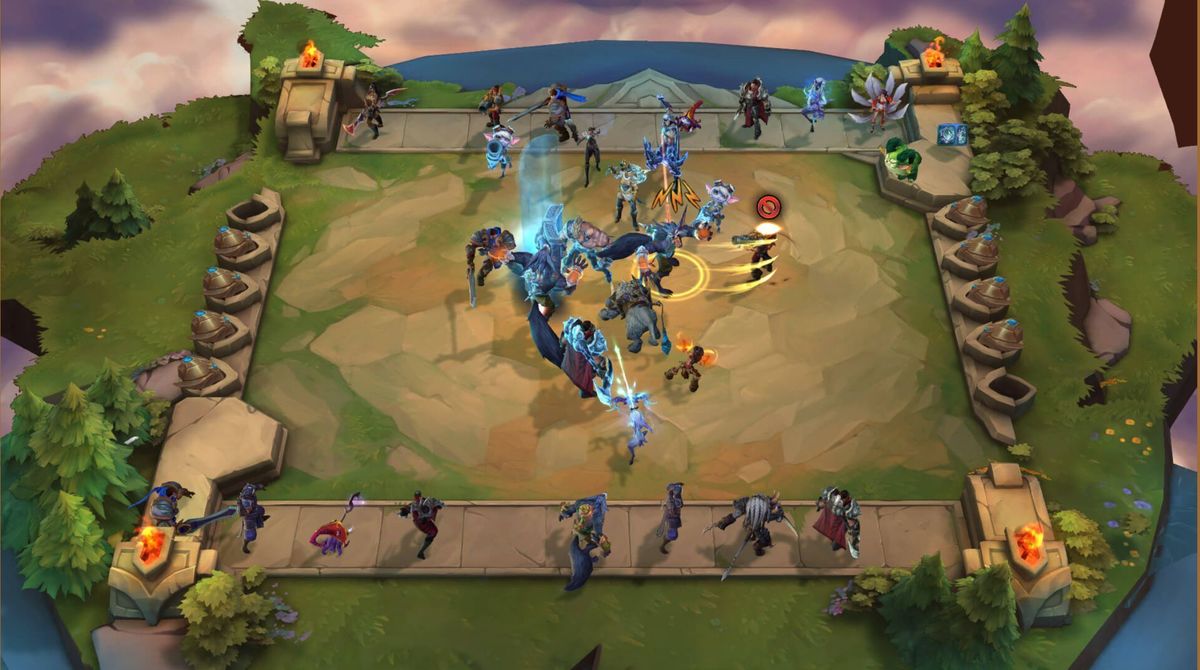
Image by Riot
It started as a whisper. “Did you try Dota Auto Chess?” And then suddenly it was everywhere, this strange spinoff of Dota that, despite the name, had little to do with chess—or with Dota.
But just as the original Defense of the Ancients mod birthed a genre, the Dota Auto Chess mod birthed another. The original Auto Chess team is still out there, but it’s largely been supplanted by Valve’s official Dota Underlords and—on the League of Legends side—Teamfight Tactics. The buzz around both seems quieter now than it did a couple years ago, and both the Underlords and Teamfight Tactics communities are a fraction the size of Dota 2 and League proper, but the “Auto Battler” is a nifty mixup of the strategy genre, and a great way to whittle away a few rainy afternoons.
Apex Legends
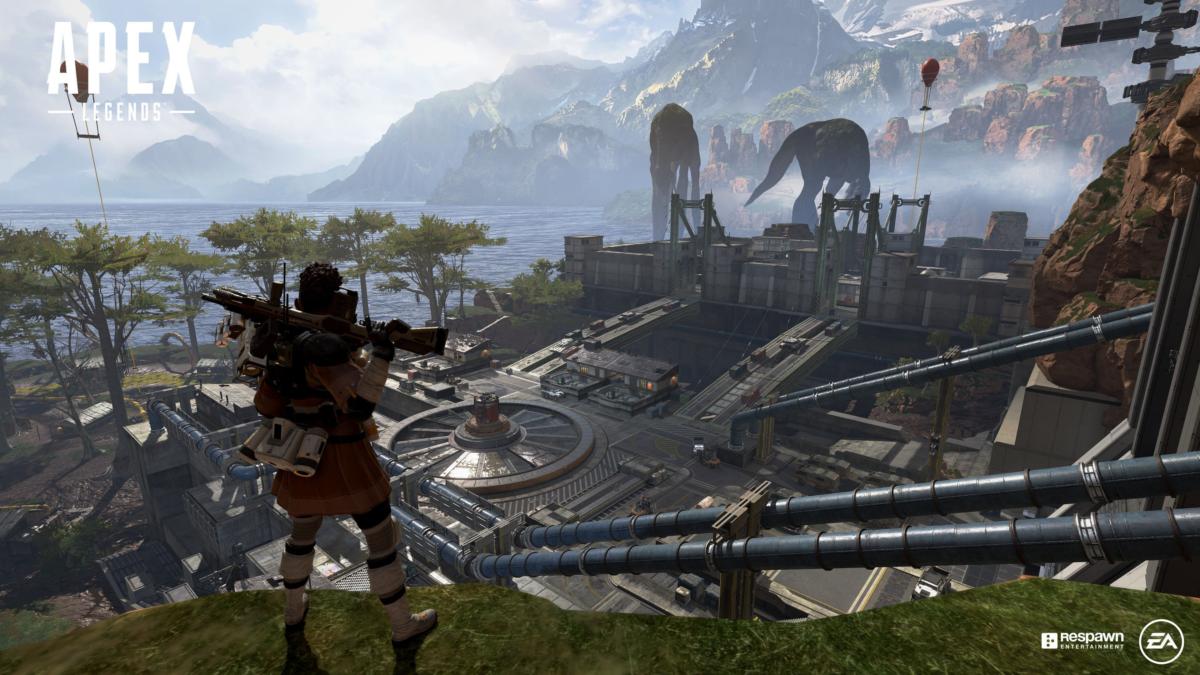
Image by Respawn
For a while it seemed like the battle royale genre had cemented around Fortnite and Playerunknown’s Battlegrounds, and that no newcomer could break through. Then Respawn surprise-released Apex Legends in February of 2019 and it became an overnight success.
At its core this is easily Fortnite‘s stiffest competition, introducing a respawn mechanic (heh) to the battle royale genre, as well as a “ping” system that let players call out weapons and enemies without actually using a microphone—both quickly “borrowed” by Fortnite. Apex also integrated elements of the hero-shooter genre, with healers, tanks, ultra-mobile robots, and so on, which gave it more personality than the bevy of PUBG clones.
The narrative’s cooled a bit in the time since the game’s launch, with Respawn suffering from uh…not pulling Epic-like crunch hours. Apex hasn’t been as quick to evolve its game as Fortnite, and there’s been some controversy around the (exorbitant) price of cosmetics. I like the characters though, and Apex still has the best movement in any battle royale game.
Call of Duty: Warzone
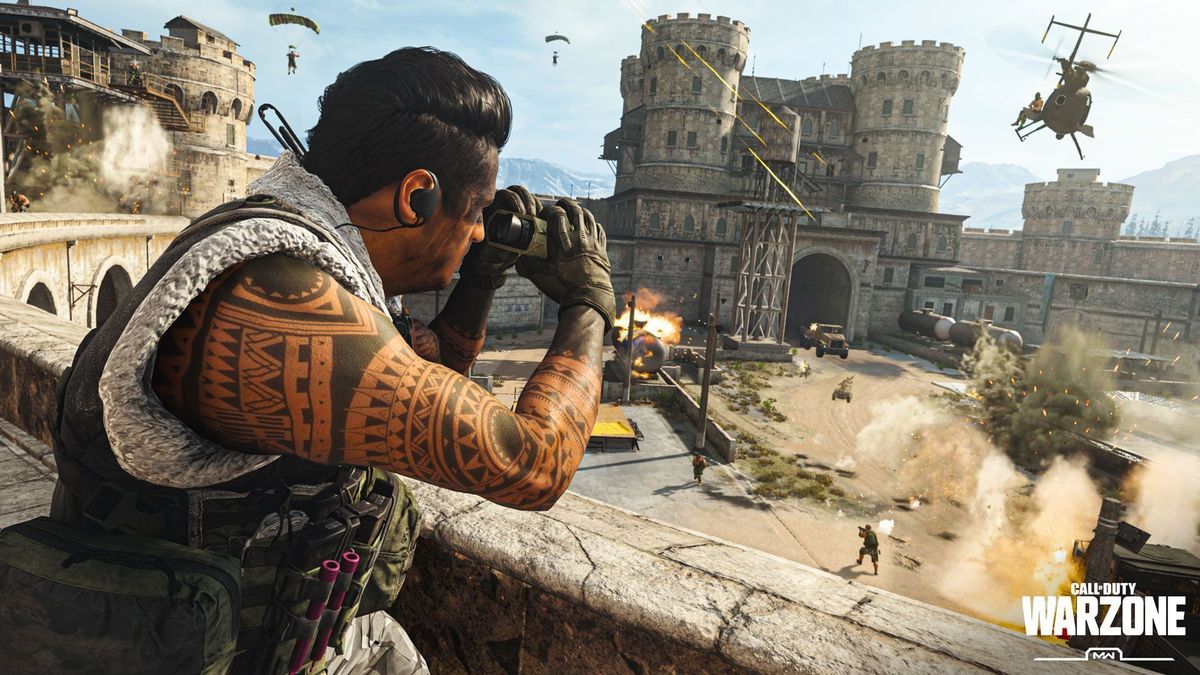
Image by Activision
I don’t want this to turn into a laundry list of battle royale games, but Warzone‘s built off Call of Duty and hit 15 million players within its first week, so…well, it’s popular. And for good reason! The guns are snappy, movement is smooth and fast-paced, it’s everything people like about Call of Duty but on a grander scale.
The standout feature is probably The Gulag though. Die in most games, you’re out of luck. Die in Warzone though and you’re sent to prison. Win a one-on-one battle and you’re then sent back to the battlefield, which takes the sting out of an early death.
Here’s hoping this is Call of Duty‘s battle royale from here on out, and they don’t put out a completely new client next year.
Counter-Strike: Global Offensive
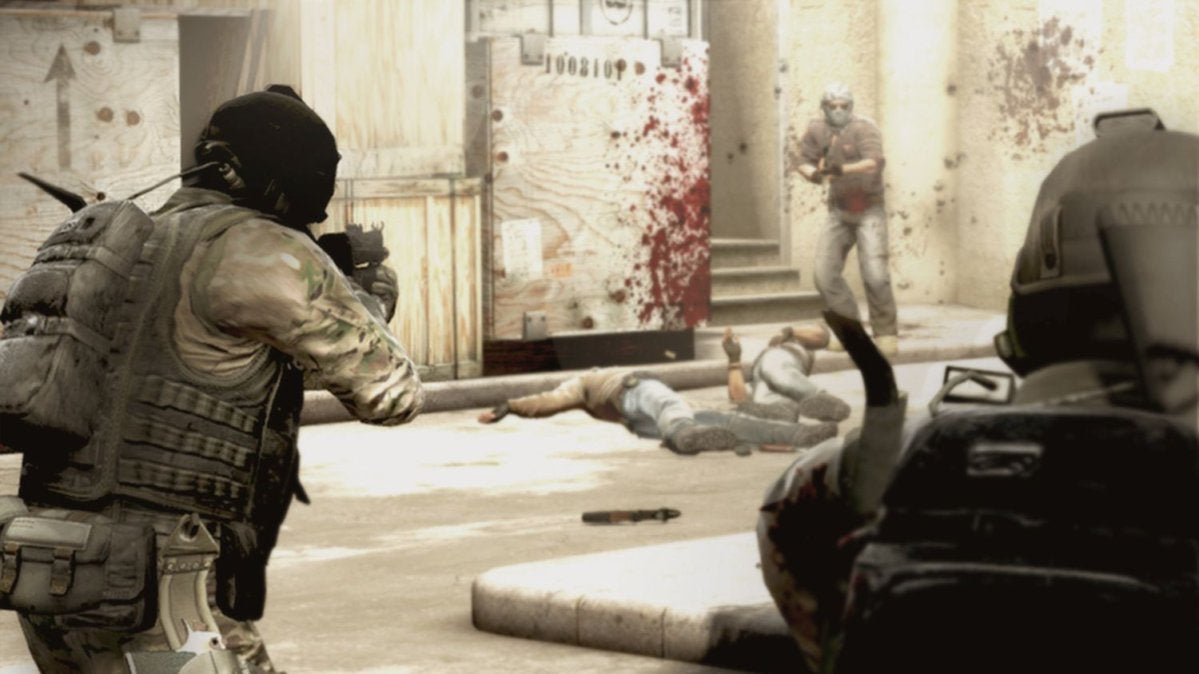
Image by Valve
Team Fortress 2 is the first non-MMO I remember pivoting from paid to free-to-play—and it’s still one of the most popular games on Steam, a decade later. But Valve made the same transition with another of its games, Counter-Strike: Global Offensive, last year, finally dropping the $10 price tag that was (ostensibly) supposed to inhibit cheaters.
Counter-Strike was already one of Valve’s biggest games, but even more so after going free-to-play. As I write this, it’s the second-most active on Steam (behind Dota 2) and has six times as many players as Team Fortress 2. Suffice it to say, it’s popular.
It’s also hard as hell, which might dampen your own enjoyment—or might not. That’s pretty much what Counter-Strike is known for, an ultra-competitive and reflex-driven shooter that rewards deep knowledge of the maps and weapons. A significant number of its fans have played some iteration of Counter-Strike for nearly two decades now. But on the other hand if you can master Counter-Strike, you’ve mastered basically every shooter. So you’ve got that to look forward to, some day.
Brawlhalla

Image by Brawlhalla
Fighting games are typically underrepresented in the free-to-play category, so it’s refreshing to see Brawlhalla, a free-to-play fighter that’s kinda, sorta reminiscent of Super Smash Bros if you squint at it real hard. The art style’s underwhelming to me, but it has that same frenzied feel to it, and thus makes for a great party game. Download, grab a few friends, enjoy. Matches support up to eight players, which is suitably chaotic.
Those who want to go deeper? Good luck. Like any fighting game (and most multiplayer games, really), the community can be unwelcoming at times. “Toxic” is thrown around in more than a few Steam reviews, probably for good reason. I’ll stick to treating it like a fun party game, I think.
EVE: Online
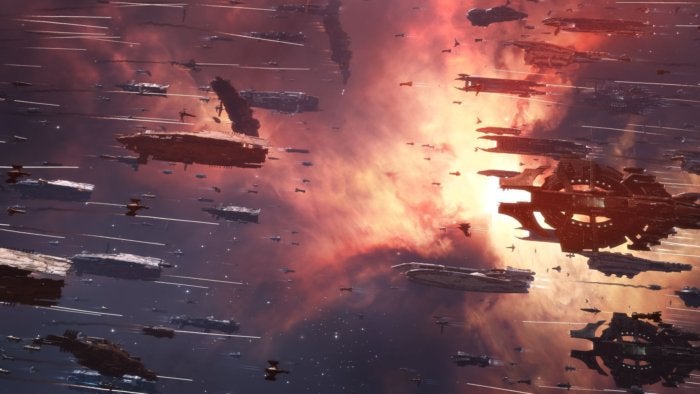
Image by EVE Online
I’m a bit torn about throwing EVE: Online on this list. CCP’s loosened up the restrictions on free-to-play users a bit since the initial pivot, but it’s still very much a try-before-you-buy situation. Free-to-play users, or “Alpha Clones,” are restricted to battleships and battlecruisers, can only train a subset of skills, and so on. If you want the full EVE experience, you’ll probably end up paying eventually.
But for a game that’s traditionally been near-impossible for newcomers to get into, free-to-play might be a good thing. Once you get through its impenetrable spreadsheet-style interface you’ll find EVE can be excellent, full of backroom politics and betrayals and friendships so strong they translate over to the real world. But that’s only after you get past its spreadsheet-style interface.
It’s as fascinating as it is intimidating. If you’ve read any stories about EVE‘s amazing battles and wanted to check out the rest of the game for yourself without committing to a monthly subscription, now’s your chance.
StarCraft II
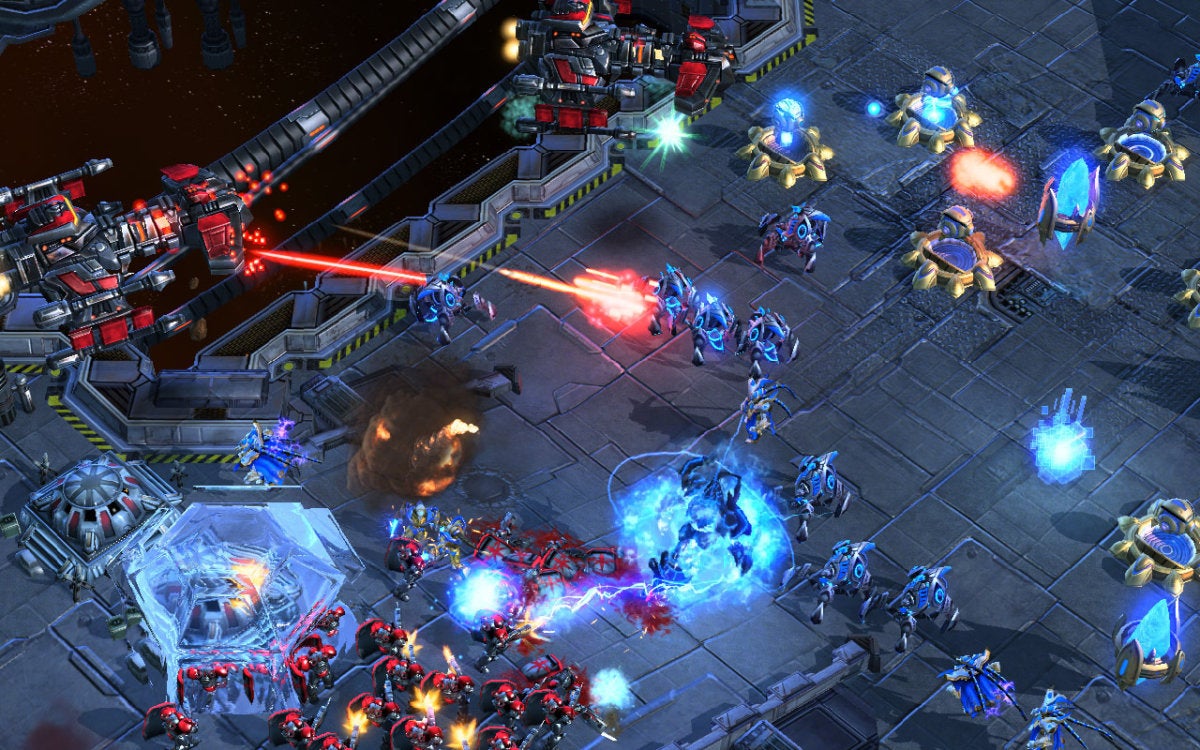
Image by Blizzard
StarCraft II: Wings of Liberty turns nine this year, a fact that’s both horrifying and…well, just horrifying. (For reference: Brood War was twelve when Wings of Liberty released.)
Those of you who’ve been very patient are in luck though, as Blizzard celebrated StarCraft II’s longevity by making Wings of Liberty free in late 2017. Both the campaign as well as pieces of the multiplayer experience are now freely accessible through Battle.net, making StarCraft II probably the best free-to-play RTS available. The custom game mode (Arcade) is still free too, for those who prefer a less serious version of StarCraft II.
And if you already own Wings of Liberty but not the expansions? Blizzard will give you a copy of follow-up Heart of the Swarm instead. You’ll still need to purchase the grand finale Legacy of the Void, though.
Paladins
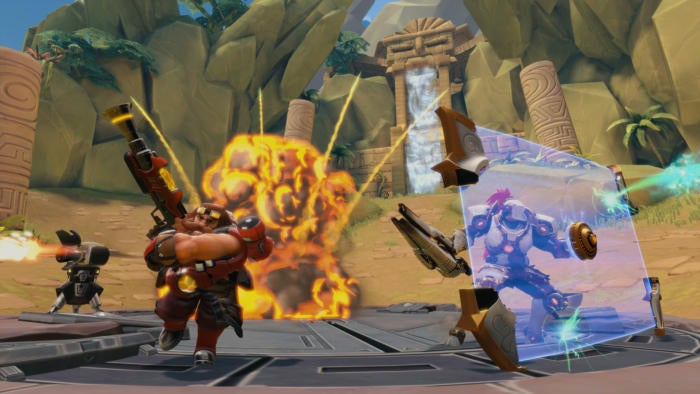
Image by Paladins
You’ll hear some people refer to Paladins as an “Overwatch clone,” and that’s understandable. It’s a hero-based shooter, with the same somewhat-cartoony aesthetic and even some ability overlaps, like the guy who wields a transparent blue shield.
But Paladins is also its own thing. It was made by Hi-Rez (of Tribes: Ascend fame/infamy) and has a unique card-based loadout system, mix-and-match skins, and more. It’s Overwatch-esque, sure, but also an excellent game in its own right—maybe a bit less balanced, and with fewer interesting champions. But for anyone who lacks the scratch to try out Overwatch or wants to give Blizzard’s shooter a break, Paladins is a solid option.
Skip the spin-off Realm Royale though. That was Paladins‘s attempt at a battle royale mode, and while it seems the overall quality’s improved a bit lately, the player counts haven’t. Dead game? Maybe not, but certainly one that’s in danger.
VRChat
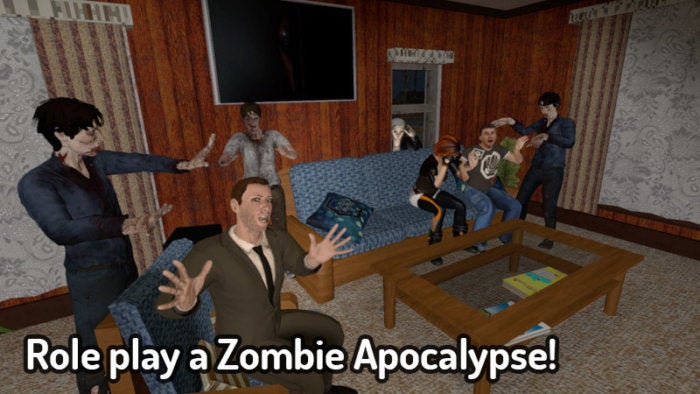
Image by VRChat
Whether or not VRChat qualifies as “free-to-play” for you probably rests on whether you already own a virtual reality headset like the Oculus Rift/Rift S or the HTC Vive/Vive Pro. If not…well, this might be the most expensive game you ever play.
But for those who do own a VR headset, VRChat is one of the best things to hit the platform so far. It’s the promise of Neuromancer and Snow Crash’s virtual hangout spaces, except it turns out the reality is more like the world’s stupidest message board than the slick cyberpunk future people expected. Think Second Life except somehow…weirder.
Virtual reality is full of interesting free experiences, actually, which helps offset the cost of the hardware. They’re short, for the most part, but experiment with VR in some interesting ways. If you’re looking for more, might I recommend Google Earth VR, Taphouse VR, VR Flush, Desert Bus VR, Nefertari, or some of the Google Spotlight Stories?
Doki Doki Literature Club
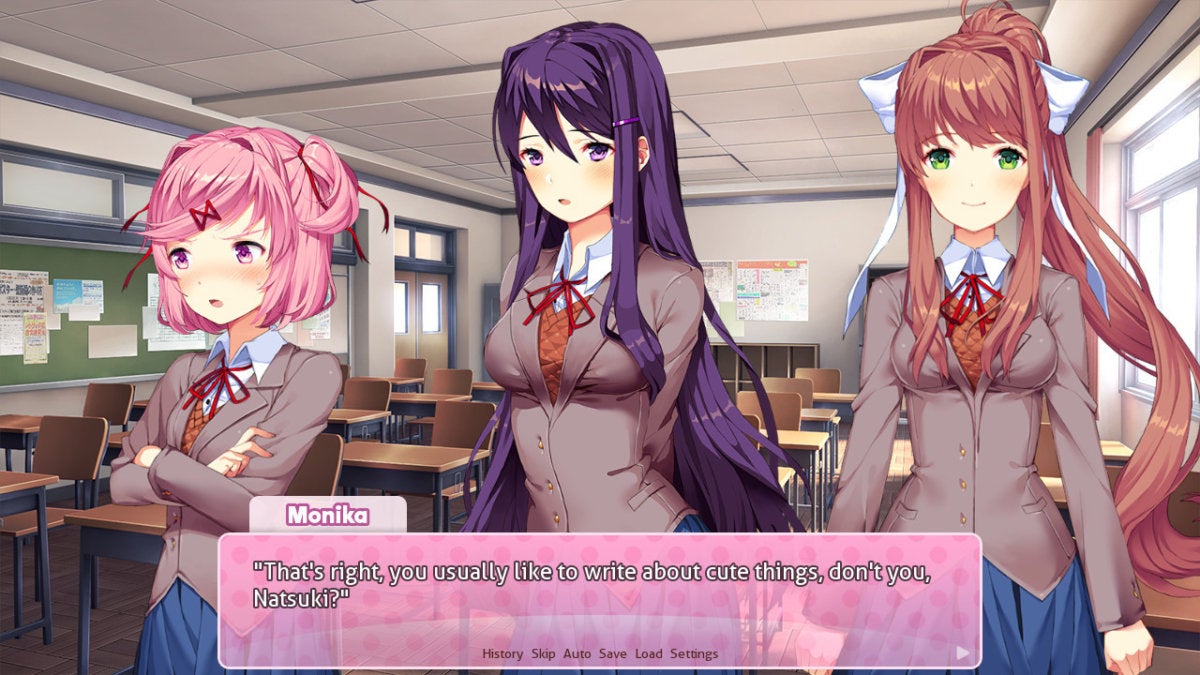
Image by Doki Doki Literature Club
Traditionally this list has focused more on “free-to-play” experiences than “free” experiences, but with Flash dead it seems like Steam’s the platform of choice for a lot of experimental or lo-fi games, sans-price tag. Doki Doki Literature Club is the first on our list, a somewhat short and story-heavy singleplayer experience. On the surface, it’s a visual novel about teenagers in the titular literature club. One of those types of visual novels, where all the ladies want to date you.
But uh…suffice it to say, there’s a lot more to Doki Doki Literature Club. Saying more would spoil it, so I’ll leave it at that, but if you have even a passing interest in visual novels you should probably check this one out. I mean, it’s free so there’s not a huge investment on your part.
Cube Escape: Paradox

Image by Cube Escape: Paradox
I’d be remiss not to add Cube Escape: Paradox as well, given how much I enjoyed it—and the series. Paradox isn’t fully free, with a paid second half that’s arguably the better of the two sections. Still, it’s a great entry-point to the Cube Escape/Rusty Lake mythos, a Victorian Gothic-inspired room escape that’s heavy on the macabre. Paradox also includes an ambitious short film, done up in the same style and which ties into the overall plot, which is a treat.
If that’s not enough, there are nine other Cube Escape games of varying lengths available for free in your browser. And hey, maybe you’ll like the style enough to pony up a dollar or two for Rusty Lake Hotel, Rusty Lake: Roots, and Rusty Lake Paradise. In my opinion they’re some of the best adventure games of the modern era—not so much for the puzzles, but for the atmosphere and the lore.
Coloring Game/Coloring Pixels
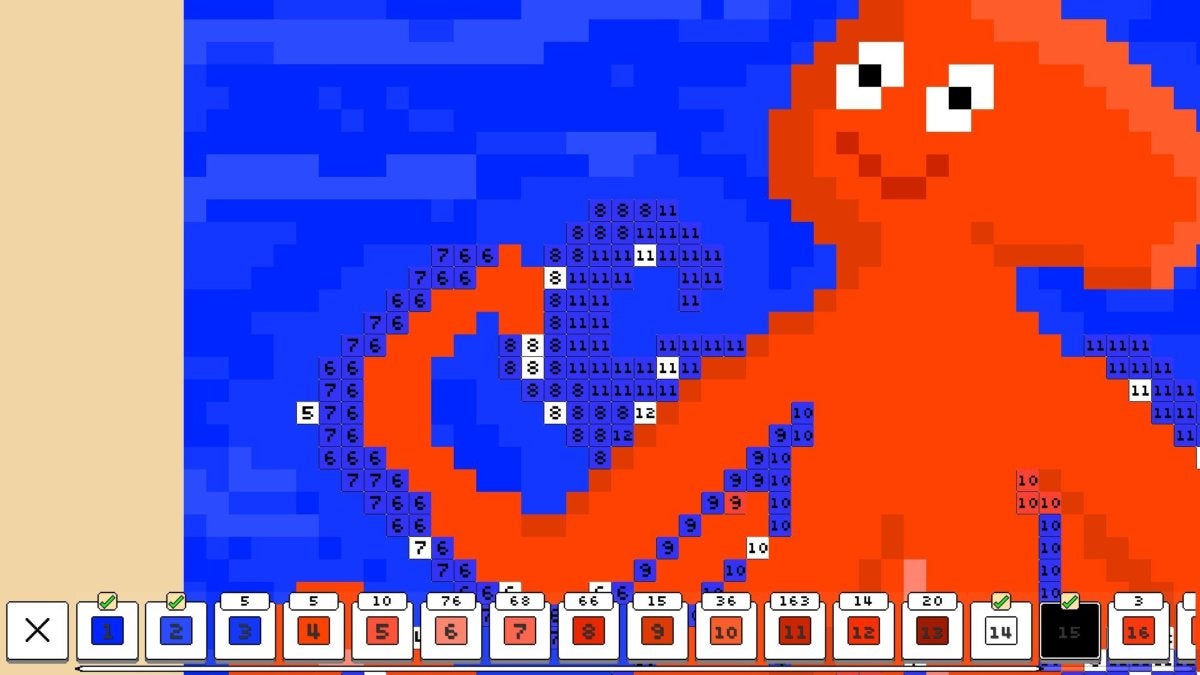
Image by Coloring Pixels
Lastly, a pair of more meditative experiences for when you’re frustrated by Dota 2 or need to come down from whatever-the-hell Burning Daylight is trying to tell you.
Coloring Game and Coloring Pixels are very similar, essentially digital paint-by-numbers games that let you fill in gridded artwork with the correct colors, one pixel at a time. Of the two, Coloring Pixels (pictured) is more relaxing—quiet piano music, and artwork that spans from simple three-color symbols up to 400 by 400 works of art. Coloring Game is lighter on content, but the gimmick is that finished artworks are animated, which is cute—and the developer has a handful of sequels as well, if you’re running low on images.
Regardless of which you choose, both are great when you just want to throw on a podcast and zone out. We all could use that sometimes.
Level up your graphics firepower

Image by Brad Chacos/IDG
Most of these free PC games should run just fine on a wide spectrum of hardware, but if you find frame rates lagging, an upgrade might be in order. PCWorld’s guide to the best graphics cards for PC gaming can help you find the best option no matter what resolution you’re running or how much cash you have in your pocket.






